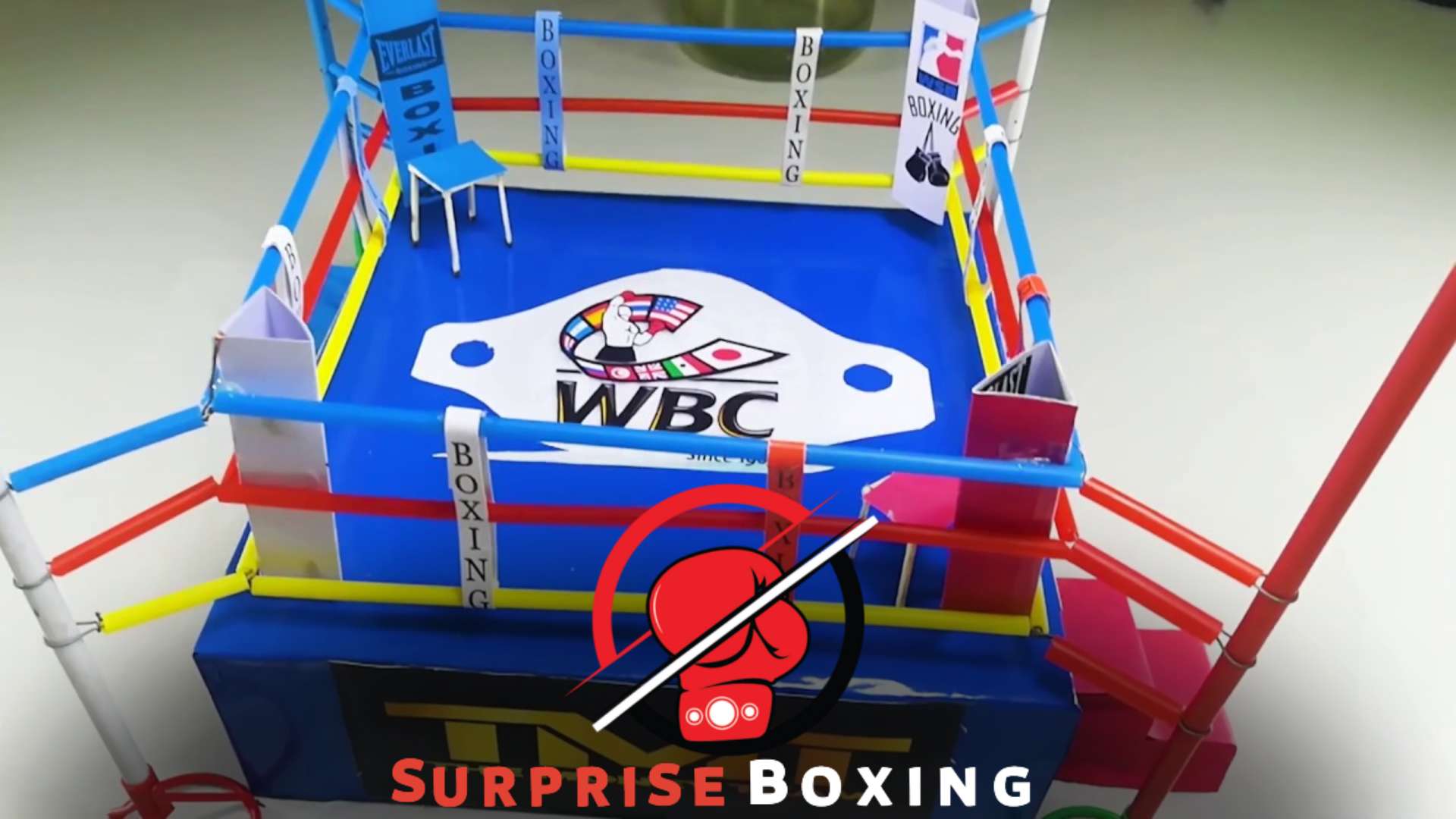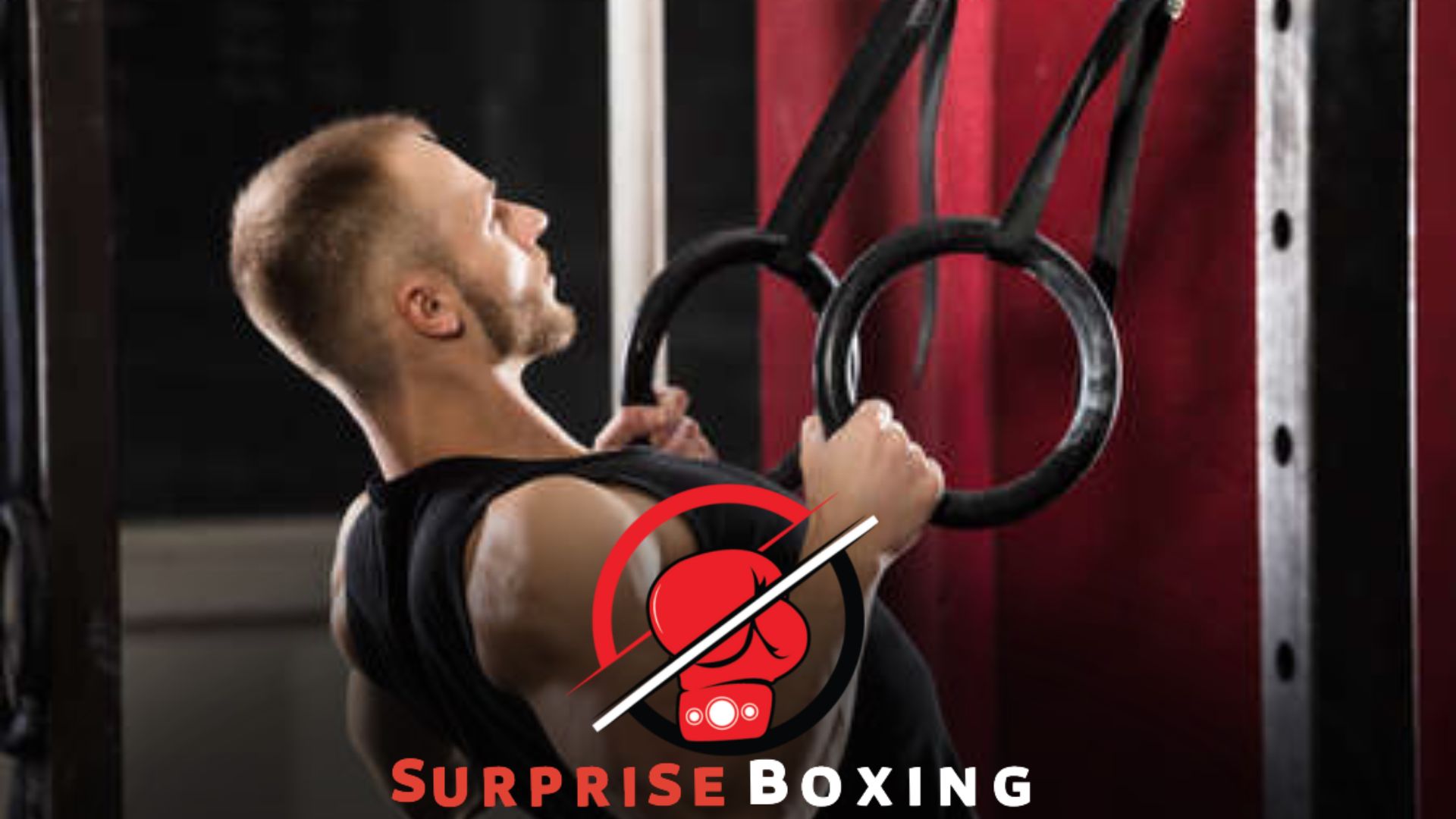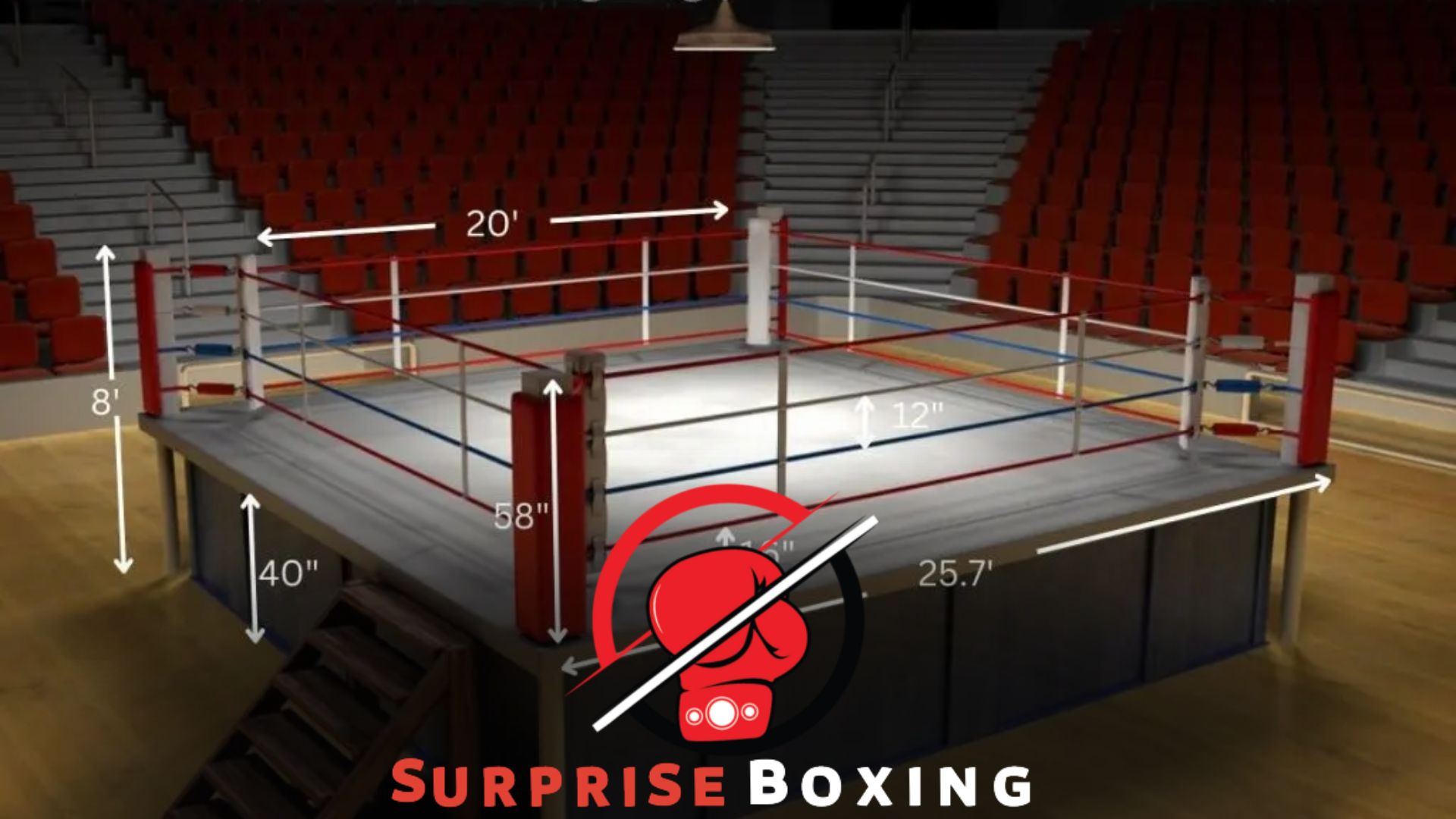You will need a sturdy platform, ropes, corner posts, turnbuckles, and canvas to build a boxing ring. Additionally, ensure that the call is sized correctly and meets safety regulations.
Boxing is a physically demanding sport requiring a dedicated training and competition space. If you are a boxing enthusiast looking to build your boxing ring, there are a few essential steps. This article will guide you through constructing a boxing ring, from assembling the necessary materials to ensuring safety and compliance with regulations.
By the end, you will have the knowledge and confidence to create a professional and functional boxing ring that meets your needs. So, let’s begin this exciting venture into boxing ring construction.
Planning and Preparation: Laying the Foundation for Your Boxing Ring Construction Journey

Planning and preparation are crucial for building a durable and safe boxing ring. You can ensure a successful construction journey by laying a solid foundation and following the necessary steps.
Building a boxing ring requires careful planning and preparation to ensure a safe and functional space for training and competitions. Whether setting up a dedicated boxing gym or creating a private room for your workout, following a step-by-step approach will help you achieve the desired results.
This section will walk you through the key considerations and steps in planning and preparing for your boxing ring construction journey.
Assessing the Space and Site Requirements
To begin your boxing ring construction journey, assessing the available space and considering the site requirements is essential. Here are the key points to keep in mind:
- Measure the available space: Start by measuring the area where you plan to build the boxing ring. Consider the ring dimensions, which typically range from 16 to 24 feet.
- Check the flooring: Ensure that the flooring is suitable for a boxing ring. It should be firm, even, and capable of supporting the weight.
- Adequate height: Considering factors such as lighting fixtures or other overhead obstructions, the space should have sufficient height clearance to accommodate the boxing ring.
- Ventilation and temperature control: Prioritize adequate ventilation and temperature control to maintain a comfortable environment for training.
Safety and Regulations
When constructing a boxing ring, safety should be a top priority. Consider the following safety measures and regulations:
- Install appropriate padding: The ring posts, ropes, and corners should be padded to minimize the risk of injuries.
- Consider the ring floor padding: The boxing ring floor should have sufficient padding to cushion falls and minimize impact.
- Accessible emergency exits: Ensure that the space has easily accessible emergency exits and that they comply with local regulations.
- Fire safety measures: Install fire extinguishers and smoke detectors in compliance with local fire safety regulations.
Choosing the Right Materials and Equipment
Selecting suitable materials and equipment is essential for creating a durable and functional boxing ring. Here’s what you need to consider:
- Ring frame: Choose a sturdy, durable frame made of steel or wood to provide the necessary structural support.
- Ring ropes: Opt for high-quality, tensioned ring ropes that offer proper tension and ensure safety during training and competitions.
- Ring canvas: Select a durable material that can withstand the rigors of boxing training and matches.
- Corner and post covers: Use corner pads and post covers made of high-density foam to protect boxers from injuries.
Hiring Professionals and Procuring Permits
Depending on your project’s complexity, hiring professionals and obtaining the required permits may be necessary. Consider the following:
- Boxing ring construction experts: Engage experienced professionals specializing in boxing ring construction to ensure a properly built and safe ring.
- Permits and licenses: Check with your local authorities to determine if any permits or licenses are necessary for constructing a boxing ring.
- Insurance coverage: Consider obtaining liability insurance coverage for the boxing ring to protect against potential accidents or injuries.
Planning and preparing for your boxing ring construction journey is the foundation of a successful project. By assessing the space, prioritizing safety, choosing suitable materials, and enlisting the assistance of professionals, you’ll be one step closer to creating a top-notch boxing ring.
Stay tuned for our upcoming section, where we will delve into the detailed steps of constructing the boxing ring frame and assembling the components.
Gathering Materials and Equipment: Essentials for Building Your Boxing Ring
Discover the essentials for building your boxing ring, from gathering materials and equipment to step-by-step instructions, ensuring you have everything you need to get started. Whether you’re a professional or a DIY enthusiast, this guide will provide the necessary information to construct your boxing ring.
Whether setting up a boxing ring in your backyard or at a professional training facility, gathering the necessary materials and equipment is crucial. Before you start building, take a moment to familiarize yourself with the essentials. This section will outline the key components needed to construct your boxing ring.
Materials
Wooden frame:
- The foundation of your boxing ring is the wooden frame. It provides stability and support for the entire structure. Choose high-quality, durable wood that can withstand the rigors of intense training and matches.
Ring posts:
- The ring posts are vertical structures supporting the boxing ring’s corners. They should be made from sturdy materials like steel or aluminum to ensure stability during rigorous boxing sessions.
Ring ropes:
- The ring ropes run parallel to the canvas, forming the boundaries of the boxing ring. They should be strong, flexible, and securely fastened to the ring posts. Typically, ring ropes are made of synthetic materials like nylon or polyester.
Canvas:
- The canvas is the surface upon which boxers fight. It should be made of high-quality, durable material that can withstand constant wear and tear. Ensure the canvas is tightly secured to the ring frame for maximum safety.
Corner pads:
- Corner pads are foam or cushioned materials at each corner of the boxing ring. They protect the boxers from injury if they accidentally collide with the ring posts. Invest in high-density foam corner pads for optimal protection.
Equipment
Turnbuckles:
- Turnbuckles are tensioning devices used to tighten the ring ropes. They allow for adjustments to ensure the ropes are at the right tension. Stainless steel turnbuckles are recommended for their durability and ease of use.
Ring stairs:
- Ring stairs provide access to the boxing ring. They should be sturdy, well-constructed, and comfortable for trainers, fighters, and officials to climb. Safety should be a priority when selecting ring stairs.
Ring steps:
- Ring steps are smaller platforms placed in each corner of the ring. They offer a stable surface for fighters to enter and exit the ring. Look for ring steps that are slip-resistant and designed for easy installation.
Ring bell:
- A ring bell is an essential piece of equipment for any boxing ring. It signals the start and end of rounds and helps maintain the flow of the match. Choose a loud enough bell to be heard over the crowd’s noise.
Security accessories:
- To ensure the safety of fighters and officials, consider adding security accessories such as ropes or barriers around the outside of the ring. These help to prevent unauthorized access during matches and maintain order in the ring.
Now that you have a clear understanding of the necessary materials and equipment, you’re ready to move on to the next step: constructing the framework of your boxing ring. Stay tuned for the next section, where we’ll guide you through building a sturdy, durable wooden frame.
Construction Process: Building Your Boxing Ring From the Ground Up
Learn how to build a boxing ring from scratch with our comprehensive guide. From selecting the suitable materials to assembling the structure, we’ll walk you through the construction process.
Building a boxing ring from scratch requires careful planning and precise execution. To guide you through the construction process, we have outlined the key steps you need to follow:
Step 1: Selecting the Right Location
Choosing the ideal location for your boxing ring is crucial. Consider the following factors:
- Availability: Find enough room to accommodate the boxing ring and the surrounding spectator area.
- Accessibility: Ensure the location has easy access for participants and spectators, including parking facilities.
Step 2: Obtaining the Necessary Permits
Before commencing construction, check with your local authorities to determine whether you require permits or approvals. Ensure you comply with all legal requirements to avoid complications later on.
Step 3: Preparing the Foundation
A solid foundation is essential for the stability and safety of the boxing ring. Here’s what you need to do:
- Clear the area: Remove debris and level the ground to create a flat surface.
- Mark the corners: Use stakes and string to mark the four corners of the boxing ring’s perimeter.
- Excavation: Dig trenches for the foundation beams, ensuring they are deep enough to provide stability.
Step 4: Setting Up the Frame
The frame forms the backbone of the boxing ring. Follow these steps to assemble it:
- Install the beams: Place the foundation beams in the trenches and secure them using concrete.
- Attach the posts: Connect the corner posts to the beams, ensuring they are level and aligned correctly.
- Add cross beams: Position the cross beams between the corner posts to complete the frame structure.
Step 5: Installing the Flooring
The flooring of your boxing ring needs to be durable and shock-absorbent. Consider these options:
- Plywood flooring: Install a layer of plywood over the frame to provide a smooth, sturdy surface.
- Rubber flooring: Cover the plywood with rubber tiles or mats for added shock absorption.
Step 6: Erecting the Ring Ropes
The ring ropes provide the boundary for the boxing ring. Here’s how to set them up:
- Attach turnbuckles: Connect the turnbuckles to the corner posts.
- Install ring ropes: Loop them through the turnbuckles, ensuring they are securely tightened.
Step 7: Adding Corner Pads and Cushions
Corner pads and cushions enhance boxer safety by providing extra corner padding. Follow these steps:
- Measure and cut: Determine the dimensions of each corner pad and cushion, then cut the materials accordingly.
- Attach the pads: Securely fasten the corner pads to the corner posts using zip ties or nails.
- Cover cushions: Place the pillows on the corners, ensuring they fit snugly.
Step 8: Mounting the Turnbuckles and Post Padding
Turnbuckles and post padding are vital for both safety and appearance. Here’s what you need to do:
- Attach the turnbuckles: Fix them to the corner posts, ensuring they are correctly tightened.
- Install the post padding: Cover the corner posts with post padding, securing them with zip ties or velcro straps.
Step 9: Finishing Touches
The final step involves some finishing touches to complete your boxing ring:
- Inspect and test: Inspect the entire construction for any loose or weak spots. Test the ring ropes and flooring for stability and resilience.
- Add finishing materials: Consider skirting around the ring, painting the frame, or placing sponsor banners for a professional finish.
Now that you have a step-by-step guide to building a boxing ring, you can embark on this rewarding construction project. Enjoy the process and ensure the safety of all participants entering the ring.
Safety Measures: Ensuring A Secure and Protected Boxing Environment
Creating a safe and secure boxing environment is crucial, and building the right boxing ring is an essential part of this process. By following proper safety measures and guidelines, you can ensure that the boxing ring provides a protected space for athletes to train and compete.
Boxing is an intense and physically demanding sport requiring a safe and secure environment for participants and spectators. To ensure the well-being of everyone involved, it is vital to implement specific safety measures in building and maintaining a boxing ring.
Here are some important considerations to keep in mind:
Ring Dimensions
- Ensure the boxing ring has the correct dimensions to provide enough space for the boxers to move around comfortably. The standard sizes for a professional boxing ring are 20 feet by 20 feet on the inside, with a height of 4 feet.
- The ropes surrounding the ring should be durable, tightly secured, and adequately tensioned to prevent any potential injury or accidents during a match.
Padding and Protection
- Cover the boxing ring floor with high-quality padding to cushion the impact for the boxers when they fall or get knocked down. The padding should be at least 1 inch thick and made of shock-absorbent materials like foam.
- Install corner pads on each turnbuckle to prevent boxers from sustaining injuries when they come into contact with the corners during the about. The places should be soft and impact-resistant, like vinyl or rubber.
Lighting and Visibility
- Adequate lighting is crucial in providing visibility for boxers and the officials. Ensure that the boxing ring is well-lit, with no shadows or dark spots that could compromise the safety of the participants.
- Install additional lighting fixtures at strategic points around the ring to avoid blind spots. This will help the referees and judges make accurate decisions during a match.
Emergency Exits and Medical Support
- Have marked emergency exits that are easily accessible for emergencies or evacuation needs. These exits should be free from obstructions and lead to a safe area outside the boxing venue.
- Always have medical personnel, such as doctors and paramedics, present during boxing events to provide immediate assistance in case of injuries. Ensure a designated medical area has necessary first aid supplies and equipment.
Flooring and Surface
- Choose a non-slip flooring material for the boxing ring to prevent any accidents caused by slipping. A rubberized surface or a canvas covering with a non-slip coating is ideal for maintaining stability and preventing falls.
- Inspect the flooring regularly for damaged or worn-out areas and repair or replace them promptly to maintain a safe boxing environment.
By implementing these safety measures and adhering to professional standards, you can create a secure and protected boxing environment that prioritizes the well-being of all participants. Safety should always be the top priority to ensure a successful and enjoyable boxing experience for everyone involved.
Customization and Branding: Creating A Distinctive Identity for Your Boxing Arena
Customization and branding are essential in building a distinctive identity for your boxing arena. Personalizing your space and incorporating your brand’s aesthetics can create a unique and memorable experience for both fighters and spectators. From customized ring canvases to branded merchandise, these elements help to establish your boxing arena as a stand-out destination in the sport.
Designing a boxing arena that stands out is crucial to creating a unique and memorable experience for both fighters and spectators. Customization and branding play a significant role in establishing a distinctive identity for your boxing venue.
Here are some key considerations to keep in mind:
1. Reflect Your Vision and Values
- Define your vision: Determine the atmosphere and style you want your boxing arena to embody.
- Showcase your values: Use your arena’s design elements to reflect your brand’s core values, such as strength, discipline, and passion.
2. Color Scheme and Decor
- Select a color scheme: Choose colors that align with your branding or evoke the desired emotions. For example, bold shades like red, black, or metallic colors often convey energy and intensity.
- Focus on branding elements: Incorporate your logo and brand name strategically throughout the arena, including walls, mats, and even equipment. This branding reinforcement will enhance recognition and build brand loyalty.
3. Unique Signage and Graphics
- Standout signage: Create eye-catching, custom signage that grabs attention and reinforces your brand’s identity. Utilize slogans, catchphrases, or quotes that resonate with your target audience.
- Inspiring graphics: Incorporate visually appealing graphics or murals that depict famous boxers or inspirational quotes. These elements can inspire fighters and captivate spectators.
4. Lighting and Sound
- Illuminate the space: Use well-designed lighting to create ambiance and focus on the boxing ring. Experiment with spotlights, colored lights, or dynamic lighting effects to enhance the atmosphere.
- Enthralling sound experience: Install a quality sound system to ensure crystal-clear audio during fights and announcements. Customize entrance music for each boxer to add to the excitement and reinforce their branding.
5. Comfortable Seating and Viewing Areas
- Optimize spectator experience: Ensure comfortable seating with good viewing angles for spectators. Consider VIP sections with premium seating options for an enhanced experience.
- Strategically placed screens: Install large screens strategically throughout the arena to provide close-ups of the action and display sponsor advertisements.
6. Personalized Touches
- Unique amenities: Offer personalized touches such as a designated training area for professional boxers, a photography wall with the logo for memorable photo opportunities, or personalized lockers for fighters.
- Vip branding opportunities: Create exclusive areas for VIP attendees, featuring personalized branding elements like logo-engraved seats or custom-designed hospitality areas.
By implementing these customization and branding strategies, you can create a boxing arena that stands out from the competition and leaves a lasting impression on fighters and spectators alike. Remember, your venue’s distinctive identity will attract loyal fans and establish your brand as a recognized name in the boxing industry.
Rules and Regulations: Navigating the Standards and Guidelines for Constructing Your Boxing Ring
Discover the essential rules and regulations for constructing your boxing ring with our comprehensive guide. Navigate the standards and guidelines to ensure a safe and professional boxing environment.
Building a boxing ring requires adherence to specific rules and regulations to ensure the safety and fair play of the sport. Whether you’re a professional promoter or a boxing enthusiast building a ring in your backyard, understanding the standards and guidelines is crucial.
This section will delve into the various aspects of constructing your boxing ring.
Boxing Ring Dimensions and Layout
- The ring must be square, with sides measuring between 16 and 24 feet.
- The floor should be made of a non-slip material, and the corners must be padded for the boxers’ protection.
- The ring ropes should be tightly stretched, with a diameter not exceeding 1 inch, and marked at regular intervals to help the referee during the fight.
Ring Construction Materials and Safety
- The ring frame is typically made of steel or wood, providing stability and durability.
- The flooring material should have some give to absorb impact, reducing the risk of boxer injuries.
- Ensure that all structural components are securely fastened to avoid any accidents during fights.
- Regularly inspect the ring for any wear and tear that may compromise its integrity.
Lighting and Acoustics
- Adequate lighting ensures optimum visibility for the boxers and the audience.
- Choose lighting fixtures that provide sufficient brightness without causing glare or shadows on the ring.
- Consider the acoustics of the boxing venue to allow the crowd to hear the action without distortion or echo.
Ring Markings and Padding
- The ring canvas should have a non-slip surface and be tightly stretched across the ring frame.
- Mark the canvas with a white line indicating the boundaries of the ring.
- Place the neutral corners diagonally across each other and mark them with red and blue padded ring post covers.
- Use thick padding to cover the corners, turnbuckles, and ring ropes to prevent injuries from accidental impacts.
Ring Accessories and Equipment
- Install a sturdy ring mat, typically made of foam or other shock-absorbent materials, to provide cushioning and reduce the risk of injuries.
- Place stool and bucket areas in the corners for the break between rounds.
- Have a bell or horn to indicate the start and end of each round.
- Prepare a slip-resistant, clean, and well-maintained ringside area for judges, referees, and medical personnel.
Inspections and Compliance
- Before organizing boxing events or matches, ensure your ring complies with local and international boxing regulations.
- Contact boxing governing bodies or regulatory organizations to coordinate inspections and certifications.
- Regularly maintain and update your ring to meet the changing safety standards and guidelines.
Constructing a boxing ring requires attention to detail and compliance with established standards and guidelines. By carefully adhering to these rules, you’ll create a safe and fair environment for boxers to showcase their skills. So, let’s start building a boxing ring that can withstand the intensity of the sport and provide a thrilling experience for all involved!
Maintenance and Care: Sustaining Your Boxing Ring for Longevity and Safety
Sustain the longevity and safety of your boxing ring with proper maintenance and care. Learn how to build a boxing ring and follow these steps to ensure its durability and security in the long run.
Ensuring that your boxing ring is well-maintained and cared for is crucial for its longevity and the safety of its users. Below are some critical steps to follow to keep your boxing ring in top condition:
Regular Cleaning and Inspection
- Clean the boxing ring after each use to remove any dirt, sweat, or blood that may have accumulated. Use a disinfectant to maintain hygiene.
- Inspect the ring for any signs of damage, such as loose ropes or torn canvas. Repair or replace damaged components promptly to avoid accidents during training or bouts.
- Regularly check the ring posts, turnbuckles, and corner pads for stability. Tighten them if necessary to ensure a secure and sturdy boxing ring structure.
Canvas and Padding Maintenance
- Clean the canvas regularly using mild detergent and water. Avoid using harsh chemicals as they may damage the canvas material.
- Inspect the canvas for any tears or weak spots. Repair or replace the canvas to maintain a safe and even playing surface.
- Check the padding on the ring ropes and corner posts for wear and tear. Replace padding if it becomes excessively worn or damaged to provide adequate protection.
Rope Maintenance
- Regularly check the tension of the ropes to ensure they are correctly tightened. Loose cords can pose a safety risk during boxing matches.
- Replace any damaged ropes immediately to prevent accidents or injuries.
- Lubricate the rope connections with a silicone-based lubricant to minimize friction and extend the ropes’ lifespan.
Mat and Floor Maintenance
- Inspect the boxing ring mat and flooring for any wear or deterioration, such as cracks or uneven surfaces. Repair or replace damaged areas to maintain a safe playing environment.
- Clean the mat and floor regularly to remove dust, debris, and sweat. Use a non-slip cleaner to maintain traction and prevent accidental slips or falls.
Remember, regular maintenance and prompt repairs are the key to sustaining your boxing ring for longevity and safety. By following these guidelines and thoroughly caring for it, you can ensure that it remains in optimal condition for years.
So, prioritize the maintenance and care of your boxing ring to create a safe and durable training environment for boxers.
Safety Equipment
- Ensure all necessary safety equipment, including gloves, mouthguards, headgear, and groin protection.
- Regularly inspect the safety equipment to ensure it is in good working condition.
- Replace any damaged or worn-out safety equipment promptly to protect the well-being of the boxers.
Materials Required for Building A Boxing Ring
- 4 corner posts
- Ropes or cables
- Turnbuckles
- Floor padding
- Canvas cover
- Ring canvas hooks
- Ring ropes tensioners
- Boxing ring skirts or aprons
Steps To Build A Boxing Ring
- Prepare the space: Clear the area where the boxing ring will be installed, ensuring it is level and free from debris or obstructions. Measure the distance to ensure it meets the required dimensions for the size of the ring you are building.
- Install the corner posts: Secure the four corner posts at the appropriate locations using heavy-duty screws or bolts. Make sure they are firmly attached and properly aligned.
- Attach the ropes or cables: Measure and cut the strings or threads to the correct length for each side of the ring. Attach them securely to the corner posts using ring rope tensioners, ensuring they are correctly tensioned.
- Anchor the ropes with turnbuckles: Install turnbuckles on each side of the ring to provide additional tension and stability to the ropes. Adjust the turnbuckles to ensure the correct amount of pressure.
- Add floor padding: Lay down foam padding within the ring area. This will provide cushioning and protection for the boxers.
- Place the canvas cover over the floor padding, ensuring it is taut and wrinkle-free.
- Attach the ring canvas hooks: Secure the cover to the corner posts using ring canvas hooks. Make sure the pins are evenly spaced and properly fastened.
- Install boxing ring skirts or aprons: Attach boxing ring skirts or aprons to the bottom of the ring, covering the outer edge and providing a finished appearance.
- Inspect and test the ring: Double-check that all components are securely installed and properly aligned. Test the call by applying pressure to the ropes and ensuring they are stable and taut.
- Make any necessary adjustments: If you notice any issues or areas that need improvement, address them promptly. This may involve tightening the turnbuckles, adjusting the tension of the ropes, or fixing any loose components.
You can construct a sturdy and professional-looking boxing ring by following these steps. Remember to prioritize safety and ensure all components are installed correctly before using the ring. Enjoy your boxing training or events in your newly built boxing ring!

Frequently Asked Questions for How To Build A Boxing Ring
How Much Space Do I Need To Build A Boxing Ring?
To build a standard-size boxing ring, you would need a space of at least 20 feet by 20 feet. This allows for the call, the ropes, and enough room for the fighters to move around. It’s essential to ensure you have enough space for the ring and safety considerations.
What Materials Are Needed To Build A Boxing Ring?
You will need materials such as plywood, vinyl or canvas matting, ring ropes, turnbuckles, corner pads, and foam padding to build a boxing ring. These materials are essential for creating a safe and professional boxing ring. Choosing high-quality, durable materials and providing the necessary support for the fighters is vital.
How Much Does it Cost To Build A Boxing Ring?
The cost of building a boxing ring can vary depending on the size and quality of the materials used. You can expect to spend between $5,000 and $15,000 on average. This includes the cost of materials, labor, and any additional features or customization you may want for your ring.
Budgeting accordingly and research are essential to ensure you get the best value for your money.
Conclusion
Building a boxing ring may seem daunting, but it can be achieved with the correct information and a carefully planned approach. Start by measuring the space and preparing the necessary materials. Choose a suitable ring size and consider safety factors like padding and ropes.
Next, assemble the ring step by step, following a detailed plan and ensuring all the components are securely in place. Remember to provide proper lighting, ventilation, and safety precautions in the surrounding area. Lastly, maintain your boxing ring by regularly inspecting and repairing damaged parts and keeping it clean and sanitized.
By following these guidelines, you can create a safe and functional boxing ring that will provide endless hours of training and enjoyment for yourself and others. Happy boxing!














